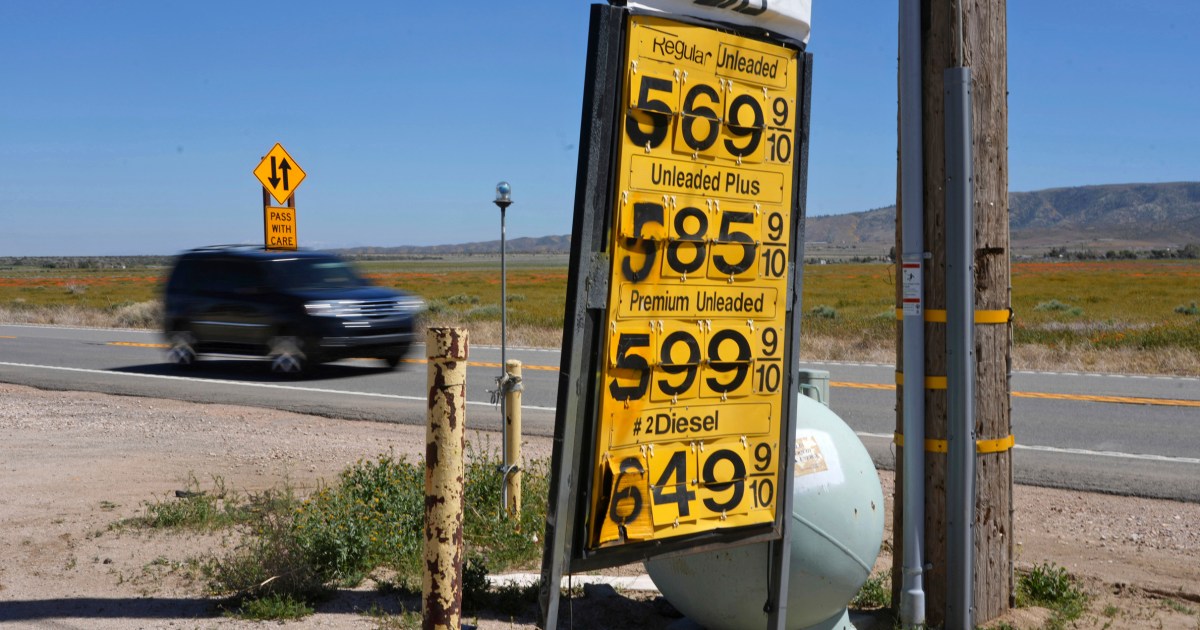The latest inflation data due to be released on Wednesday is likely to strike some familiar notes.
It is expected to show that US households still feel hemmed in by the high prices of goods and services in this economy.
Blame it on food and energy costs and consumer demand that is still heating up.
The consensus among Wall Street analysts is for prices to show another 5% annual rise for April. That’s the same as March, according to the Labor Department.
There are some clear reasons why inflation is proving hard to conquer.
«We’re in a strong demand environment,» Neil Dutta, head of economics research at Renaissance Macro Research group, said in an interview. «And one of the reasons for that is that labor markets are very tight,» meaning that the demand for workers exceeds the supply of those available.
In fact, the most recent jobs data showed the unemployment rate fell back to its post-pandemic low of 3.4%.
«We have an overheated economy,» Dutta said.
What else keeps inflation high?
Included with that «tight» job market: continued wage increases. Data from the Bureau of Labor Statistics shows that average hourly earnings rose 4.4% during the 12 months through April. That’s good news on paper, but paying workers more money usually means employers will raise prices for goods and services, which is ultimately passed on to consumers.
Rising wages are one reason Bank of America economists told clients last week that they forecast continued increases in the cost of dining out. Last week, the BLS reported Leisure and hospitality revenue increased 5.7% year-on-year in April.
Grocery costs may also show significant increases underway, as food companies like PepsiCo, Nestle and Unilever said in their most recent earnings reports that they have continued to raise prices.
BofA economists say more «demand destruction,» meaning consumers cut spending even after prices have fallen, is needed to slash inflation.
That’s all despite the fact that the Federal Reserve raised its key federal funds rate for 10 consecutive meetings to the highest level in 16 years. By raising interest rates, the Fed hopes to make borrowing and investing more expensive and thus dampen demand for goods and services.
But the US economy is a huge machine, so it takes time for those interest rate increases to slow things down significantly. At his press conference last week, Fed Chairman Jerome Powell did not explicitly rule out additional rate hikes at central bank meetings this summer. Powell also lowered expectations for a rate cut this year, saying it’s «not in our forecast.»
A wild card and a silver lining
One category is largely out of the Fed’s control: gasoline prices. Thanks to a production cut by OPEC, they rose last month.
The overall effect has been a persistently inflationary environment that continues to plague the economy.
«Unfortunately, it’s been like seeing the financial equivalent of a car accident,» Mark Hamrick, an economic analyst at Bankrate, said in a note Monday. “Between the spikes in gasoline, food and housing prices, there has been no shortage of aggravation sources associated with inflation for many months. This tension is easing but it has not disappeared.”
Despite growing concerns about the well-being of American households, recent data shows that savings rates have increased by two straight quarterswhile a survey on Monday found that consumer perceptions of their current financial situation improved in April.
That can translate into continued demand and price increases.
«The labor market and inflation continue to show an economy where demand exceeds supply and inflation is stubbornly high,» Citigroup economists wrote in a note to clients Monday. Wednesday’s inflation report, they said, is likely to «cast into question the extent to which core inflation has slowed.»

